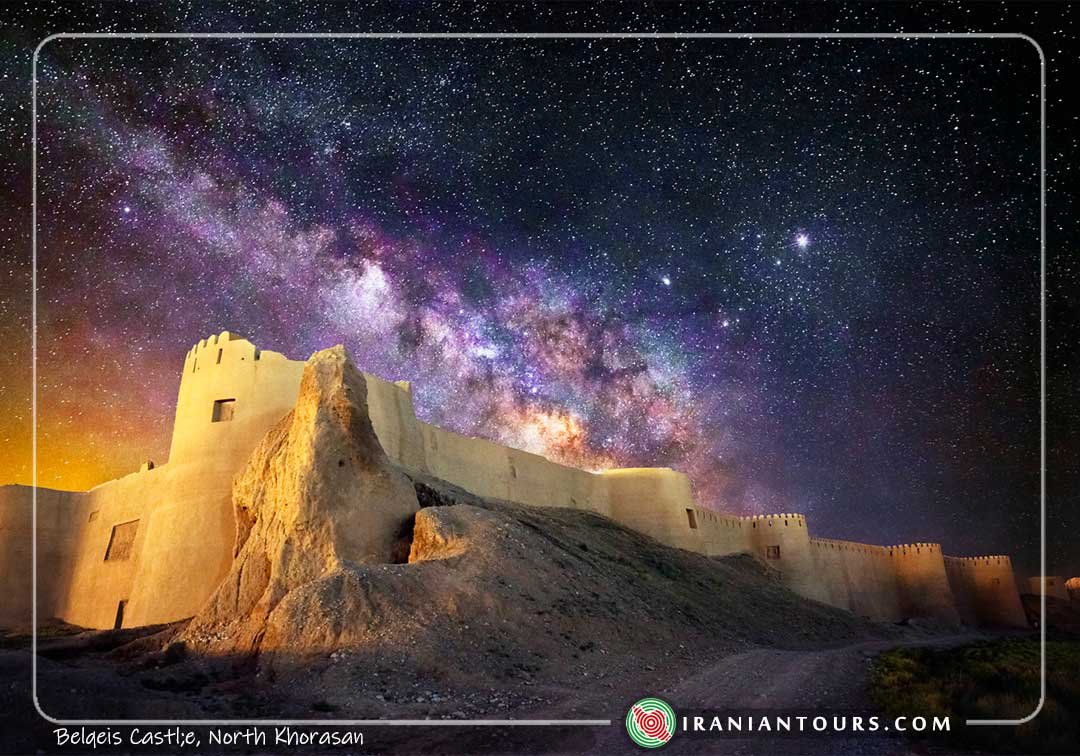Belqeis Castle
Spreading over an area of 180 hectares, the historical complex of Belqeis in Esfarayen, North Khorasan Province, is one of the largest adobe structures in Iran, which consists of various sites including caravansary, citadel, water reservoir, bazaar, and an extensive cemetery.
The ancient complex was inhabited during the sixth century CE and the Safavid era. Hence, it provides archaeologists with evidence on the lifestyle of Iranians who once resided in the city.
Belqeis Citadel — with a height of 11 meters and 29 towers — is one of the largest ancient castles of Iran, which is still maintained in a good state.
Ahmad Nikpey, an archaeologist, said plenty of coins have so far been unearthed in the historical city, featuring the name of ‘Esfarayen’ on both sides.
“Coins are one of the most reliable types of record, as they remain untouched over centuries, and can tell archaeologists about how people lived in an area,” he said, according to the English-language paper Iran Daily.“Coins featuring the name of Esfarayen were popular for 700 years,” he said.
Ahmad Rast-Goftar, another archaeologist, said Esfarayen was called ‘Belqeis’ after it was conquered by Arabs in the 610 CE.
“The Arab conquerors decided to call the city Belqeis because of the similarity in climate between Esfarayen and the ‘Land of Belqeis’ in Yemen,” he said. He added, however, some historians believe renovation of the city upon the order of Belqeis Khatoun — mother of Teymour Gourkani — is yet another reason for the city taking its name after Belqeis.
Sharestan Battlement, which dates back to Safavid era, is a defensive wall with a length of about five kilometres and a thickness of about seven meters.
The battlement is among the most important monuments of North Khorasan.
A pottery furnace, dating back to 12th century CE, has also been discovered during the third phase of excavations in Esfarayen.
The furnace was the first of its kind in North Khorasan Province and used for producing enamelled potteries.
Esfarayen is also home to the tomb of Sheikh Azari — a poet who lived in the 15th century CE.
All historical sites of Esfarayen have been registered on the National Heritage List under the name of Belqeis Historical Complex.






